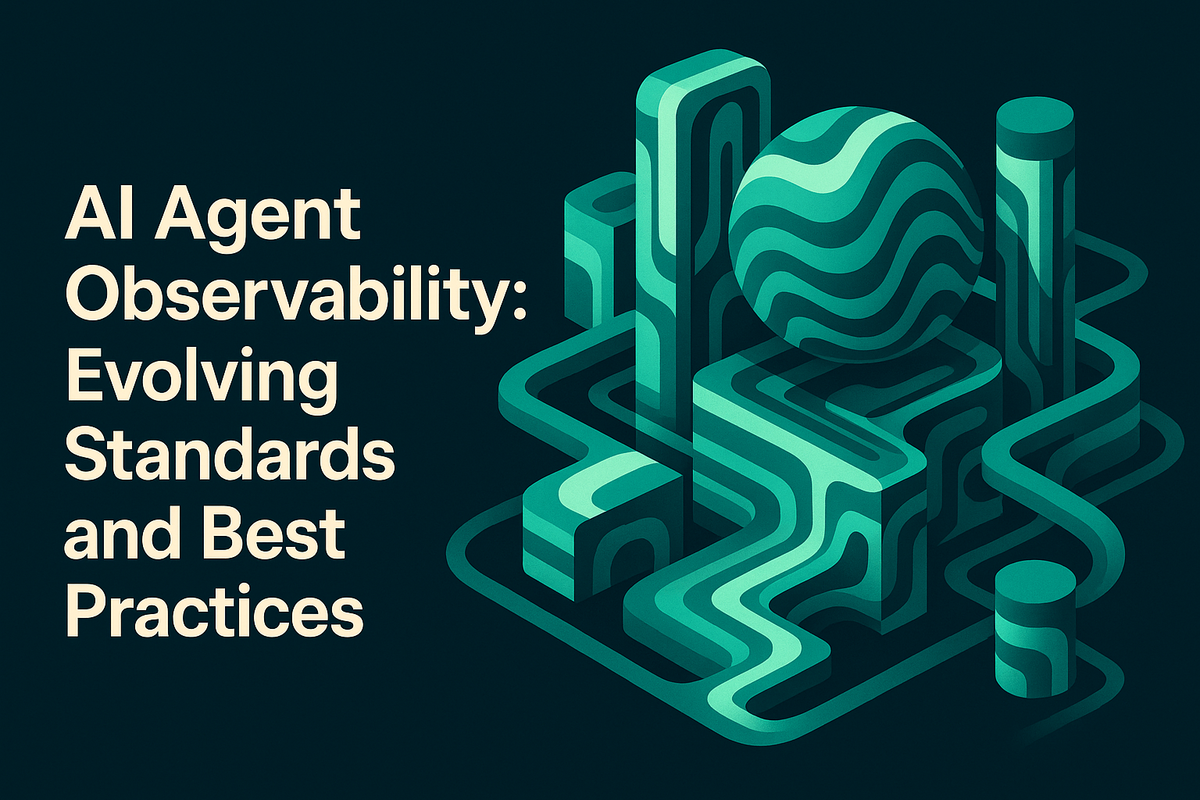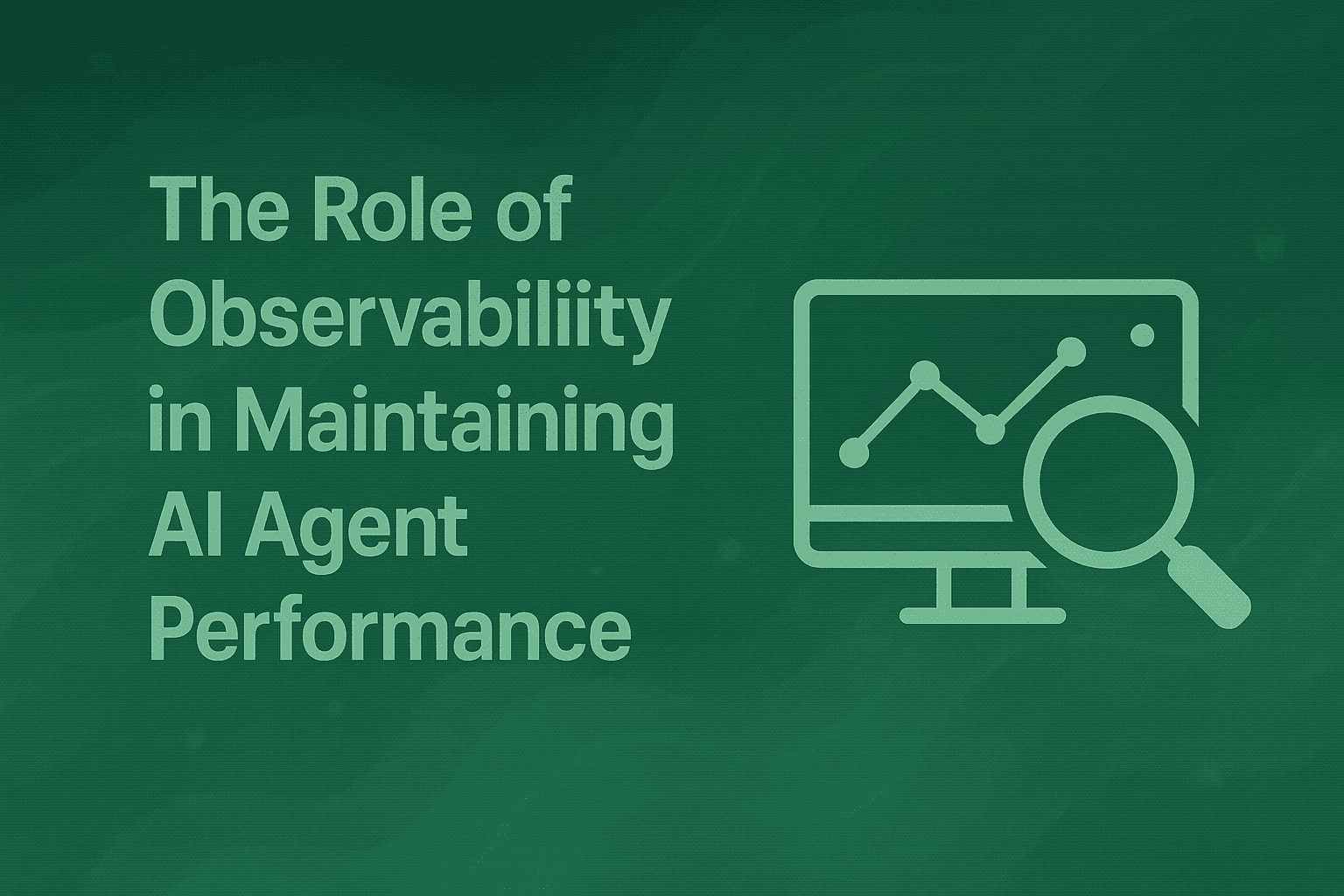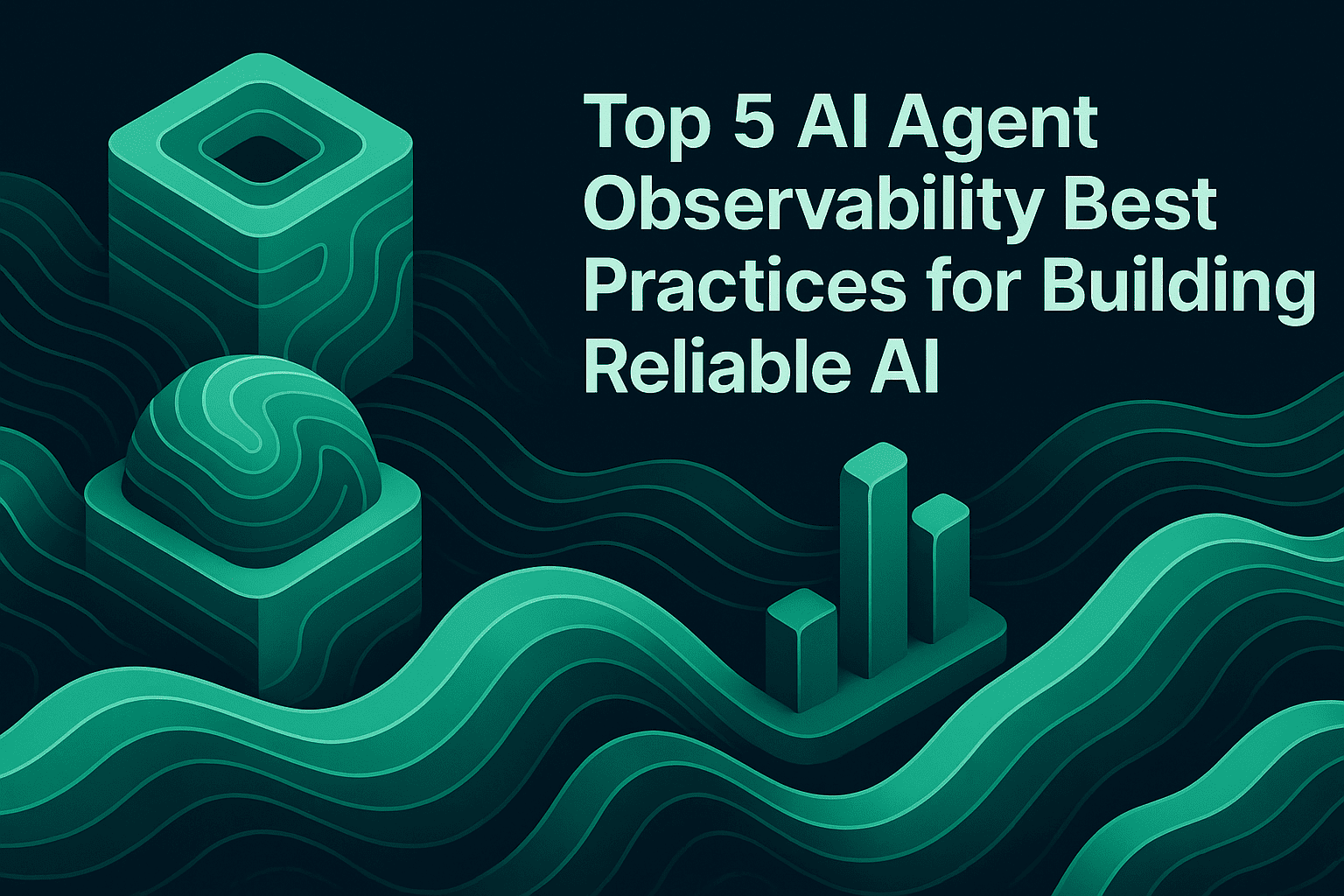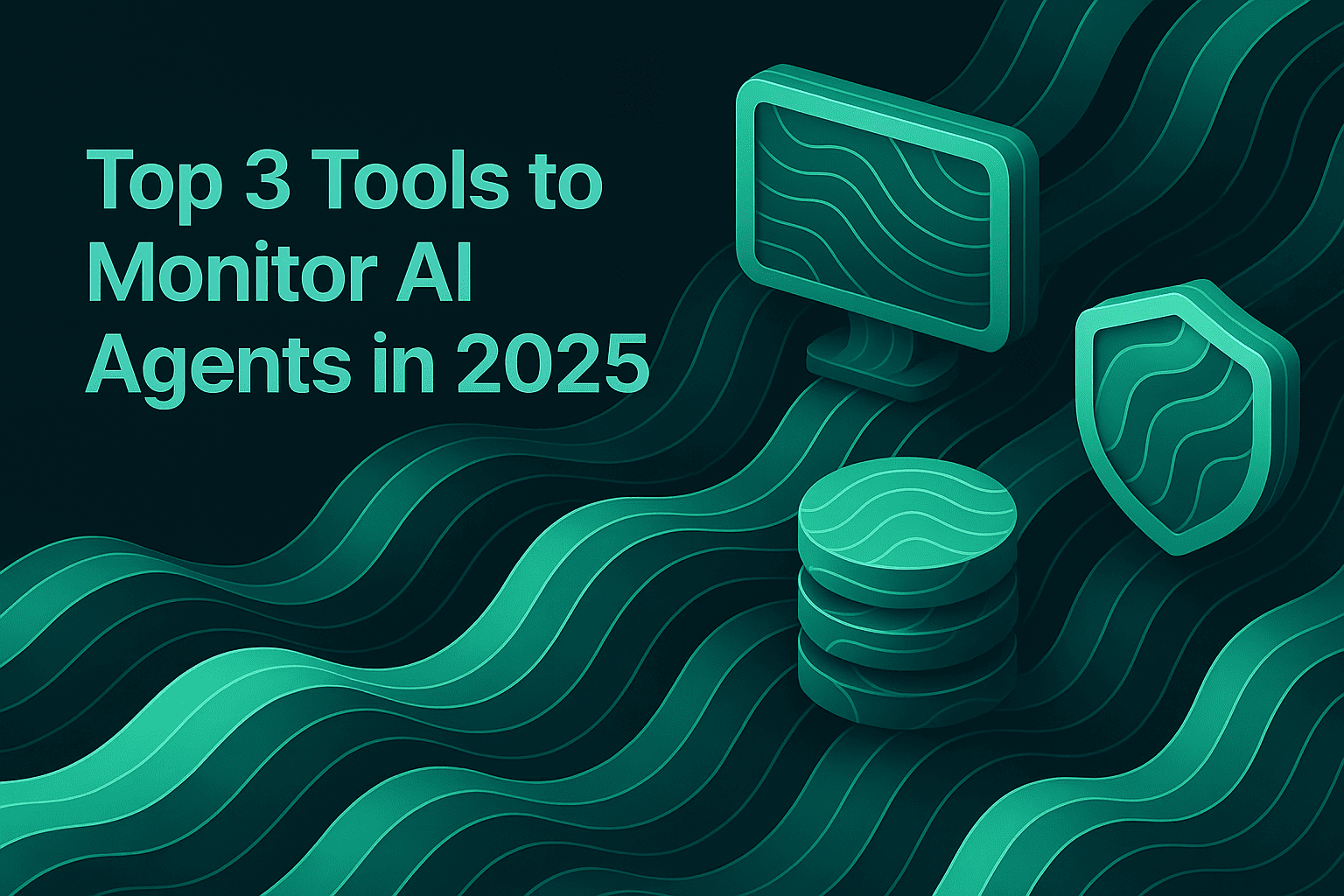AI Agent Observability: Evolving Standards and Best Practices

The rapid adoption of AI agents in enterprise environments has created a critical need for robust observability frameworks. According to PwC, eight in ten enterprises now use some form of agent-based AI, yet many organizations struggle with the complexity of monitoring these autonomous systems. As AI agents become more sophisticated, organizations require standardized approaches to monitor, trace, and evaluate their behavior across the entire lifecycle.
Understanding AI Agent Observability
AI agent observability extends beyond traditional application monitoring to address the unique challenges of autonomous AI systems. An AI agent is an application that uses a combination of LLM capabilities, tools to connect to external data sources, and high-level reasoning to achieve a desired end goal or state. Unlike deterministic software, agents make dynamic decisions, interact with external tools, and adapt their behavior based on context.
Agent observability uses the same telemetry data as traditional observability solutions but includes additional data points unique to generative AI systems, such as token usage, tool interactions, and agent decision paths. This expanded scope enables teams to understand not just what agents do, but why and how they do it.
The practice of agent observability serves two critical functions. First, it enables operational monitoring to detect performance issues, errors, and bottlenecks in real time. Second, it creates a feedback loop for continuous quality improvement, where telemetry data helps enhance agent capabilities over time. Without proper observability, organizations struggle to troubleshoot complex AI workflows, scale reliably, or maintain the transparency necessary for stakeholder trust.
The Evolving Standards Landscape
The observability landscape for AI agents remains fragmented despite significant progress. Some frameworks offer built-in instrumentation, while others rely on integration with observability tools. This fragmented landscape underscores the importance of the OpenTelemetry's emerging semantic conventions, which aim to unify how telemetry data is collected and reported.
OpenTelemetry Semantic Conventions
The GenAI observability project within OpenTelemetry is actively working on defining semantic conventions to standardize AI agent observability through two primary initiatives: agent application semantic conventions and agent framework semantic conventions. These conventions ensure that AI agent frameworks can report standardized metrics, traces, and logs, making it easier to integrate observability solutions and compare performance across different frameworks.
The initial AI agent semantic convention is based on Google's AI agent white paper, providing a foundational framework for defining observability standards. This standardization effort addresses critical challenges including inconsistent telemetry formats and vendor lock-in risks that organizations face when telemetry is tied to proprietary formats.
The OpenTelemetry specifications define comprehensive guidelines for traces, metrics, and events specific to generative AI systems. These specifications enable consistent data interpretation, correlation, and automation across different agent implementations and frameworks.
The MELT Framework for AI Agents
Traditional observability relies on MELT data, metrics, events, logs, and traces. For AI agents, this framework extends to capture AI-specific signals that are critical for understanding agent behavior and performance.
Metrics aggregate high-level indicators like latency, and token counts. Since AI providers charge by token usage, tracking this metric directly impacts costs. Organizations can optimize spending by monitoring token consumption. Additional metrics include tool invocation rates, decision path lengths, and error rates specific to agent operations.
Events log detailed moments during model execution, such as user prompts and model responses, providing a granular view of agent interactions. These events are essential for understanding the decision-making process and identifying patterns in agent behavior.
Logs record agent decisions, tool calls, and internal state changes to support debugging and behavior analysis. Unlike traditional application logs, agent logs capture the reasoning steps and context that led to specific actions.
Traces track each model interaction's lifecycle, covering input parameters and response details. Tracing captures detailed execution flows, including how agents reason through tasks, select tools, and collaborate with other agents or services, helping answer not just what happened, but why and how it happened.
Best Practices for AI Agent Observability
Implementing effective agent observability requires a comprehensive approach that addresses the unique characteristics of autonomous AI systems.
Continuous Monitoring and Distributed Tracing
Continuous monitoring tracks agent actions, decisions, and interactions in real time to surface anomalies, unexpected behaviors, or performance drift. For multi-agent systems, distributed tracing becomes essential to understand how agents interact and collaborate across complex workflows.
Effective agent tracing captures the complete execution context, including prompt inputs, model parameters, tool invocations, and response outputs. This comprehensive visibility enables teams to identify bottlenecks, optimize performance, and troubleshoot issues quickly. Organizations should implement tracing at multiple levels—from individual LLM calls to complete agent sessions—to maintain visibility across different granularities.
Evaluation and Governance
Agent observability builds on traditional methods and adds two critical components: evaluations and governance. Evaluations help teams assess how well agents resolve user intent, adhere to tasks, and use tools effectively. This expanded approach enables deeper visibility into agent behavior and supports continuous monitoring across the agent lifecycle.
Agent evaluation should occur both pre-release and in production. Pre-release evaluations validate agent behavior across simulated scenarios, while production evaluations measure real-world performance and alignment with user expectations. Organizations should combine automated evaluators with human-in-the-loop reviews to ensure comprehensive quality assessment.
Governance ensures agents operate safely, ethically, and in compliance with organizational standards. Governance enforces policies and standards to ensure agents operate ethically, safely, and in accordance with organizational and regulatory requirements. This includes monitoring for harmful outputs, validating task adherence, and maintaining audit trails for compliance purposes.
Token and Cost Tracking
Cost management is a critical aspect of agent observability. Organizations should implement comprehensive token tracking across all LLM interactions to understand cost drivers and optimize spending. This includes monitoring token usage patterns, identifying high-cost queries, and implementing caching strategies where appropriate.
Advanced cost tracking should attribute expenses to specific agents, tasks, or customers to enable granular budgeting and optimization. LLM gateway solutions can provide centralized visibility into multi-provider usage and costs, enabling organizations to implement governance policies and budget controls effectively.
Tool Interaction Monitoring
AI agents interact with various external tools and APIs to accomplish tasks. Monitoring these interactions is essential for understanding agent capabilities and identifying potential failure points. Organizations should track tool invocation patterns, success rates, and error conditions to optimize tool usage and improve agent reliability.
Effective tool monitoring captures both the request context (why the agent chose to use a particular tool) and the outcome (whether the tool call succeeded and what information was returned). This visibility enables teams to improve tool selection logic and handle edge cases more effectively.
RAG Observability
For agents that use retrieval-augmented generation, RAG observability becomes critical. Organizations need visibility into retrieval quality, including which documents were retrieved, their relevance scores, and how they influenced the final response. This enables teams to optimize retrieval strategies, identify gaps in knowledge bases, and improve answer quality.
RAG tracing should capture the complete retrieval pipeline, from query formulation through document retrieval to context integration. This comprehensive visibility helps teams debug retrieval failures and optimize the balance between retrieval breadth and response quality.
Building Observable AI Agents with Maxim
Implementing comprehensive agent observability requires a platform that addresses the full lifecycle of AI applications. Maxim AI provides an end-to-end platform for AI simulation, evaluation, and observability, helping teams ship their AI agents reliably and more than 5x faster.
Maxim's agent observability suite empowers organizations to monitor real-time production logs and run them through periodic quality checks to ensure reliability. The platform provides distributed tracing for multi-agent systems, enabling teams to track, debug, and resolve live quality issues with real-time alerts to minimize user impact.
Beyond production monitoring, Maxim supports the complete agent lifecycle. The experimentation platform enables rapid prompt engineering and iteration, while the simulation capabilities allow teams to test agents across hundreds of real-world scenarios before deployment. This comprehensive approach ensures that observability insights feed back into the development process, creating a continuous improvement cycle.
Maxim's Data Engine enables seamless data management, allowing teams to curate and enrich multi-modal datasets from production logs for evaluation and fine-tuning. This integration between observability and data curation ensures that production insights directly improve agent quality over time.
For organizations managing multiple LLM providers, Maxim’s Bifrost provides a high-performance AI gateway with unified observability across all providers. Bifrost's native Prometheus metrics, distributed tracing, and comprehensive logging integrate seamlessly with Maxim's observability platform, providing complete visibility into agent behavior regardless of the underlying LLM provider.
Conclusion
AI agent observability is rapidly evolving from fragmented, vendor-specific approaches to standardized frameworks built on OpenTelemetry conventions. Organizations that implement comprehensive observability practices (including continuous monitoring, distributed tracing, evaluation, and governance) will be better positioned to deploy reliable, scalable AI agents.
The key to successful agent observability lies in treating it as an integral part of the development lifecycle rather than an afterthought. By combining real-time monitoring with robust evaluation frameworks and comprehensive data management, teams can build AI agents that perform reliably, operate efficiently, and continuously improve over time.
As AI agents become increasingly central to enterprise operations, the importance of standardized observability will only grow. Organizations should adopt platforms that provide end-to-end visibility across the AI lifecycle, from experimentation through production deployment.
Ready to implement comprehensive observability for your AI agents? Schedule a demo to see how Maxim can help you ship reliable AI agents faster, or sign up to start monitoring your agents today.


